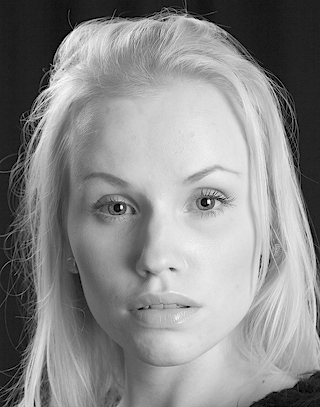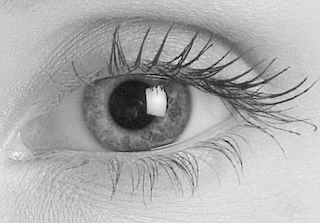Introduction
In part 2 of this report I analyzed the performance of the M8, purely based on results, derived from lab tests. In my view this approach should establish a base line against which you can compare the practical results.
I noticed that the quest for absolute performance values, that can be directly comparable is not possible. The universal wish to get a simple merit figure that makes ranking of photographic equipment a piece of cake, is and will stay a pipe dream. But I also reported that the measured results could vary by a margin of up to 10%, depending on the setup of the test lab parameters and the inevitable variation in the numbers that is inherent in all measurements. Let us also keep in mind that any manufactured product is subject to engineering tolerances, that are often set at a variance of 5%. Reviewers who present numbers or results as absolute values are not or do not want to be aware of these variations in results. We are discussing here measured lab results, based on numbers that are generated by test equipment. As soon as we leave the realm of numbers and go into, what has been called 'subjective' test reports, we are on dangerous ground. It would be better to use the term 'user assessment' to categorize this type of reporting. The subjective and sometimes unreliable character of user assessments has been amply demonstrated some years ago when a German magazine send a lens to a group of reviewers. The lens was accompanied by MTF graphs and other measurements. One field tester noted a lack of image quality, another was impressed by the image quality, a third noted a high brilliance and contrast where another just thought these characteristics were lacking, one claimed natural colors and another saw a blue cast and so on.
And here we are talking about just one link in the imaging process.
In the era of film-based photography we had only three variables to account for: the camera, the lens, the film. The image equation was simple: a + b + c. If a camera got a 10 and a lens got a 10 and the film a 10, the result is 30. If a camera got a 9 and a lens an 8, then the result is always of lower quality. The variables are independent from each other. But now we have a more complicated image equation:
Camera + sensor + lens + image capture + preprocessing + compression + reconstruction + post processing. Thus now we have an equation with eight variables, that are partially interdependent. We can have a low sensor quality, but a superior postprocessing and the final result may be better: a + b + c + d + e + f + g + h= 5 + 3+ 5 + 5+ 8+ 9 +7 + 6 = 58 and another may be 10 + 10 + 10 + 2 + 8 + 2 + 6 + 10 = 58 too.
It is quite evident that the current complicated and interdependent imaging chain is quite difficult to test in all separate aspects. Results may and will vary based on the nature of the process. Without measurements as a stable reference, subjective impressions have to be made against the particular and personal set of working conditions and accumulated experience. The Epson R-D1 may serve as an example. I have been skeptical from the beginning, and based my report on measurements. A number of reviewers were very impressed by the performance and some even based lens assessments on it. Currently the status of the Epson (after reviewing the M8) is not being lowered by the same reviewers. It is true that we always need to balance the evaluation of equipment between the stark figures that may tell you nothing (when not interpreted adequately) and the subjective visual impressions that may be very relevant from a prospective user view.
In my reports I always give precedence to the measurements as these are the factual reference and then add the visual assessment to complement the figures. Below are two comparison pictures made with the same Leica lens: Summilux-M 1.4/50 ASPH and the same test chart at the same distance. The smaller size of the Epson image is due to the smaller sensor size. But the difference in performance is quite visible. Leica right and Epson left
The IR issue.
I will skip this topic until the filters will be available. It has been discussed ad nauseam on many internet forums (by the way: the best information can be found in the non-leica user groups) and by now the issue is simply this: Leica has made an official statement that enhanced IR sensitivity is an issue and will be dealt with properly by the provision of dedicated filters before the lens. That solution may not please everybody (especially the photographer who does not want any filter before his lens), but we have to live with it. I have always maintained the view that any piece of equipment that is optimized in one direction must have weaker points in another direction. And the M8 is no exception. You may accept or reject the choices that the Leica engineers have been forced to make. Once you accept the proposal, you can own an excellent piece of photographic equipment.
M8 performance in the field.
Dynamic range.
I used the standard step-chart ST-52 ISO 14524 OECF target. Measurements show a dynamic range of between 8 and 9 stops, depending on the selection of the extreme densities. If you take the just detectible differences then a 9 stop range can be accommodated. If you prefer to take the limits of the printing process into consideration, then an 8 stop range is preferable. This result is for ISO 160. At ISO 1250 the range shrinks to about 7 stops. Still a very good result. Noise at that speed is of course quite high. For the Canon 5D the results are; ISO 160: 7 stops and for ISO 1250 again 7 stops. Noise is much lower in the Canon case.
Analysis of the steepness of the curve shows that the Leica M8 has better discrimination in the shadow areas than the Canon, but has somewhat more noise here.
This is a surprisingly good result for the M8 and at lower speeds the Leica can cope with a wide contrast range.
Color reproduction
I hesitate to make comments on the color reproduction in this stage of testing, as I could not use an IR-blocking filter to get balanced results.The picture below of a MacBeth chart (a small section of the total image area) gives a good impression of color separation on small color patches. As many monitors are differently calibrated the result may vary between computers and users.
Black and white pictures.
The Leica rangefinder concept has always been associated with black and white photography. Black and white compares to color as writing poetry versus writing a story. The potential of Leica lenses is such that medium format imagery could be possible if the capture material could support it. The comparison between Leica M8 digital files and the new Adox film with Spur developer is the topic for the next article.
Here I compare the performance of the M8 with that of the Canon 5D, one of the current crop of high-quality digital camera and capable of outstandingly good results.
The general verdict from the previous article, that the M8 is the equal of the best performing digital cameras in the filed is substantiated by these comparison pictures. To eliminate as many variables as possible, I used studio light, a tripod and the Apo-Summicron 2/75 at medium apertures. The Canon had the very good 24-105 at focal length 75 and also at medium apertures. In this comparison the Canon cannot capitalize on its larger sensor area as I wanted to get the same pixel area. Results are almost indistinguishable, but on critical inspection of the Raw files on the monitor, the Leica image showed more three dimensionality, especially in the reproduction of the eye-ball, which has more transparency and depth.
Below: full picture; middle Canon eye: bottom: Leica eye



On the other hand we see some artifacts in the eye-brow area of the Leica picture. It is an indication that the Leica performance is on the edge. The Canon has slightly more reserves here. Both pictures were raw-processed by ACR with sharpness set at 25% for both images. No additional postprocessing in Photoshop; only Channel Mixer to get BW images. Setttings here were: red at 80, green at 34 and blue at -14, adding to 100, as it should be.
NOTE: all my tests are done on the basis of Raw files. The fine tuning is done on Raw and then the files are transferred to JPEG for display in the browser. As far as I know there is not yet any browser that can display the original Raw file format. Some comments on my articles assume that I rely on JPEG files to make my analysis. This is not correct.
The M8 performance is image wise excellent and one could not wish for more quality at this moment in time. An aspect that is often neglected when comparing image quality is the consistency of focus accuracy of the M camera. I have always stated that AF is very nice and comfortable, but the AF accuracy is not constant and not always to the point. A long series of pictures with the 5D (on tripod, and a non-moving target) gave variable results: many pictures were spot on, but a fair amount of shots (about 10%) was off and unsharp in such a way to render the image non-useable. The same series with the Leica gave consistently good results.
I will not dwell too much on Leica/Canon differences. Within the stated margins of error, both perform outstandingly well. The Leica M8 has the additional advantages (for staunch rangefinder aficionados and for who wants to join this community) that distinguish the M-concept from the SLR world.
The Leica M8 creates images that have that famous Leica fingerprint. The basic quality is so high that one begins to see defects where the eye did never roam before. See the picture below of a picture shot against the sun. The selection shows a very small part of the scene and here one notes that digital capturing has its limits. The red cast over the birds and the small spots in the water reflections are the combined effect of lens limits and sensor limits. (lens used the Summilux-M 1.4/50 ASPH at f/5.6).
The portraits below are straight pictures without any post processing beyond the black and white conversion. They are samples of the high quality of the Leica M8 images. Particularly interesting is the smooth modulation of the highlights in the skin of the model. Often one reads complaints about the flatness and artificiality of many digitally captured images. In these examples one can see the fine textural details that are rendered with depth and dimension. Depending on pc and scrren brightness, the density of the picture may differ.